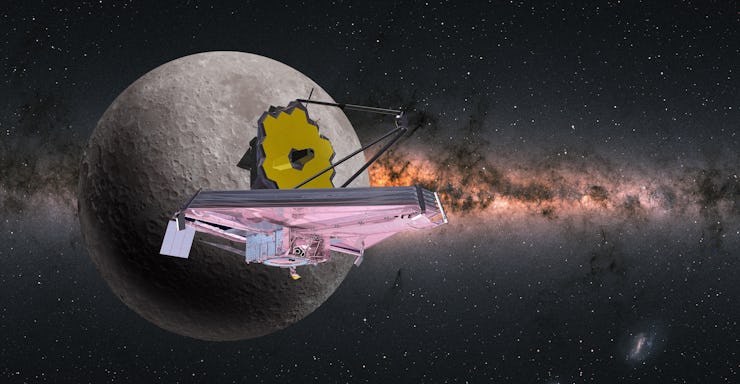New Webb Telescope Image Reveals Energetic Protostars Behaving Like “Kittens”
This image offer a primordial view of star life.

Two new stars have just kickstarted their lives, and the James Webb Space Telescope (JWST) took a look at their childish behavior.
On July 26, NASA and the European Space Agency published an image of an object called Herbig-Haro 46/47. Their telescope took six exposures of this scene, located 1,470 light-years away in the constellation Vela, with its Near-Infrared Camera (NIRCam). The end result is a composite view that educates as much as it dazzles.
“Like kittens, actively forming stars are balls of energy,” officials from the Space Telescope Science Institute, a multi-mission science operations center for NASA’s flagship observatories, shared in a recent statement. “But instead of being overtaken by the zoomies, stars emit energy in the form of jets, creating fantastic, textured scenes.”
Herbig-Haro 46/47, captured by the NIRCam instrument on JWST.
What did the telescope capture?
Objects like the one in this image offer a primordial view of star life. The binary pair of protostars nestled deep within a nest of dust and gas where the largest diffraction spikes meet are only thousands of years old. These stellar fledglings will take millions of years to clear out the surrounding chaos. Catching the frenzy of their early lives is a scientific privilege.
One special feature of Herbig-Haro 46/47 is the blue cloud near the center. JWST officials describe this nebula as “gauzy.” In optical light, this dusty nebula appears black. But JWST can see in infrared wavelengths to detect subtle traces of heat. This brings this cloud out from the darkness of space.
The nebula affects another major feature: the orange lobes. They were created when the two protostars consumed too much material quickly.
“When the stars ‘eat’ too much material in too short a time, they respond by sending out two-sided jets along the opposite axis, settling down the star’s spin, and removing mass from the area. Over millennia, these ejections regulate how much mass the stars retain,” JWST officials shared.
These lobes can change shape when new ejections slam into older material. JWST officials said this scene is like “a large fountain” that turns on and off “in rapid, but random succession.” This results in enchanting “billowing patterns.”
A star is born
In terms of stellar longevity, JWST’s image is akin to a snapshot in a baby’s photo album. The scene may not change much in our mortal lifetimes, but to these star twins, it’s fleeting.
Eventually, the stars will grow up, and clear up the ejections of their cosmic playground.
This article was originally published on